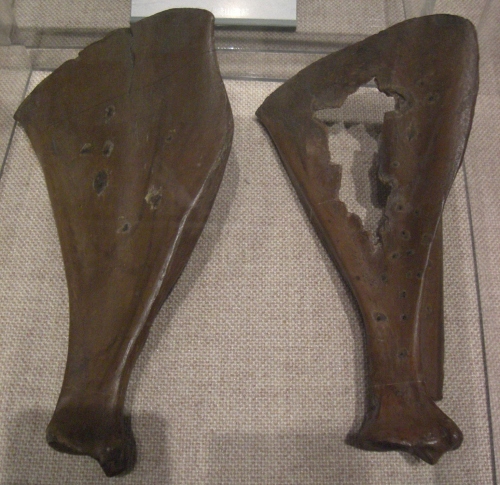Agricultural Rituals
Seasonal agricultural and magical rites and ceremonies were performed by the Yayoi people, like the Jomon people who came before them. They left behind many signs of their rituals. The bronze bells and mirrors were used in their ritual ceremonies as were stone halberds and stone swords and other such ritual tools.
Shamanism and magic
The Chinese account Wajinden mentions that the people of Wa during a time of civil unrest had enthroned Himiko as their queen. Queen Himiko, records the Wajinden, was a shaman priestess who governed, controlled and captivated the minds and loyalties of her people through divine spiritualism, magic and sorcery.
She was shrouded in an air of secrecy, mystiscism and asceticism. Nobody saw her except the lone male servant who had access to her for the purpose of serving her meals and being her spokesman and messenger. Wajinden recorded that 1,000 maids served her willingly.
Shamanism involves ecstasy and trances, and provides shamanic followers with a source of inspiration in times of need. Shamans have the roles of go-between mediums, revealing the will of the gods; as prophetesses, seers or readers of divine oracles; soothsayer, fortune teller, medicine man, procurers of good fortune and as such whose services were especially needed in times of wars, famines, and other social crises.
Cultures of all early society had some sort of priest or shamans. Shaman priests were common all through out Asia (Tibet, China) at the time. Female shamanesses outnumber male shamans on the Korean peninsula. China’s earliest religion is thought to have been Taoism, “the way of the spirits” since 6th century B.C. The Ryukyus were ruled by the Sho dynasty under a combination of a king and his sister or niece as a shamanic priestess, the latter ruling over all the shamanesses and priestesses in the kingdom, until the Meiji era. Even today shamans can be found in Central and Northern Asia, Korea, Japan, as well as among many African and South American tribes.
Divination
Divination or scapulimancy – the practice of divination by burning scapulae (shoulder bones) usually that of deer (tortoises were occasionally used). An oracle would probably have been delivered by reading the heat cracks, scratches and lines. More than 100 oracle burnt bones excavated at 25 Yayoi sites throughout Japan are evidence of this practice.

Bones used for fortune-telling, Otsu village, Yokohama
The Chinese Wei Zhi chronicle records the reasons behind the practices of the Yayoi people as thus:
“Whenever they undertake an enterprise and discussion arises, they bake bones and divine in order to tell whether fortune will be good or bad. First they announce the object of divination, using the same manner of speech as in tortoise shell divination; then they examine the cracks made by the fire and tell what is to come to pass.”



